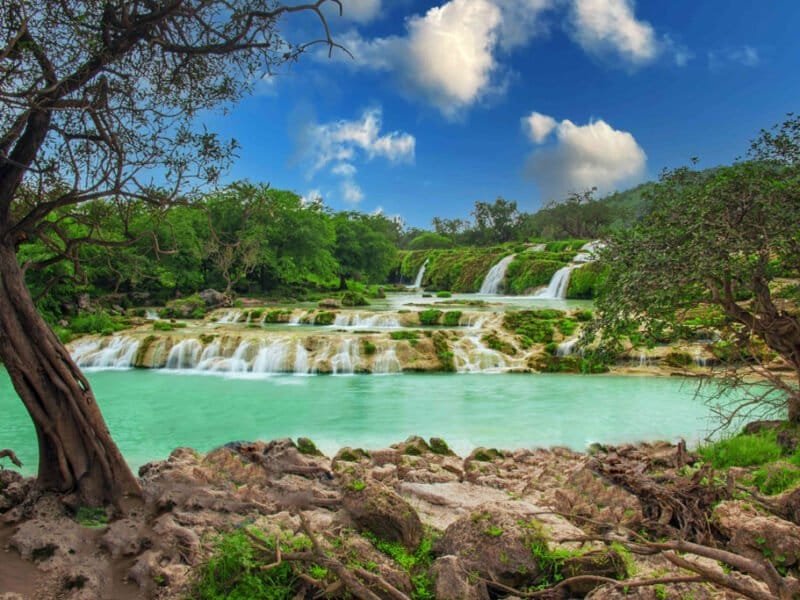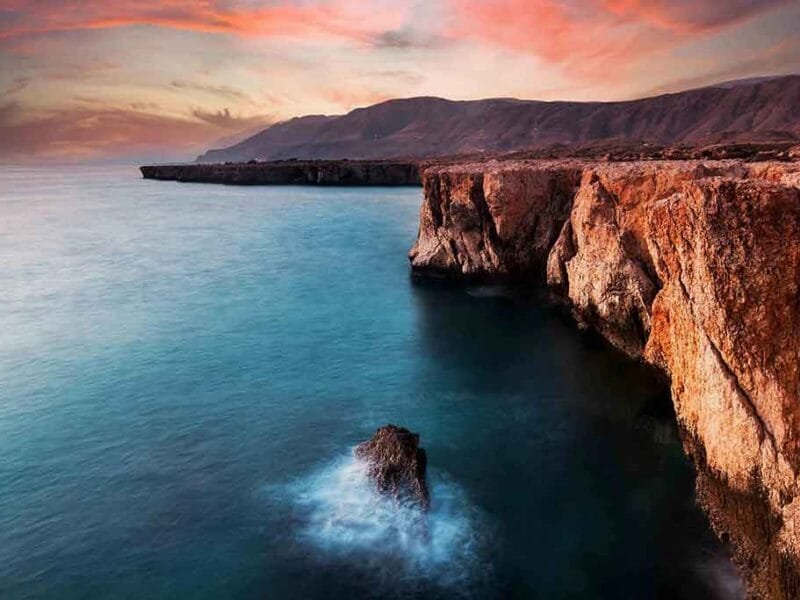Varanasi
VARANASI
EMBRACE THE MYSTIC ALLURE
VARANASI: THE OLDEST LIVING CITY
Lying in the south of Uttar Pradesh, on the banks of the holy River Ganga, breathes Varanasi, which is believed to be the oldest living city in the world. For centuries, the mystic of this place has been attracting pilgrims from across India as well as abroad.
THE CITY OF MYSTIC APPEAL
A dwelling of ancient domes, muths, ashrams, priests, and narrow lanes with shops filled with Benaresi sarees, Varanasi represents the colorful and fascinating India of your dreams. With intimate rituals of life and death being parallelly performed on the Ghats, you’ll find it exhilarating to explore the religious geography of this city.
IMMERSE YOURSELF IN SPIRITUALITY
Walk through the busy alleyways or watch the sunrise from a boat for an unforgettable experience. Trace the perimeter of the city, paying homage to shrines all the way. Who knows, a journey to this City of Light may turn out to be your favorite stop of all.
A CITY STEEPED IN HISTORY
Varanasi, also called Benares, Banaras, or Kashi, is one of the oldest continuously inhabited cities in the world. Its early history is that of the first Aryan settlement in the middle Ganges valley. By the 2nd millennium BCE, Varanasi was a seat of Aryan religion and philosophy and was also a commercial and industrial center famous for its muslin and silk fabrics, perfumes, ivory works, and sculpture.
A CITY OF RELIGIOUS AND CULTURAL SIGNIFICANCE
Varanasi was the capital of the kingdom of Kashi during the time of the Buddha (6th century BCE), who gave his first sermon nearby at Sarnath. The city remained a center of religious, educational, and artistic activities as attested by the celebrated Chinese Buddhist pilgrim Xuanzang, who visited it in about 635 CE and said that the city extended for about 3 miles (5 km) along the western bank of the Ganges.
A CITY OF REVIVAL AND RESILIENCE
Varanasi subsequently declined during three centuries of Muslim occupation, beginning in 1194. Many of the city’s Hindu temples were destroyed during the period of Muslim rule and learned scholars fled to other parts of the country. The Mughal emperor Akbar in the 16th century brought some relief to the city’s religious and cultural activities. There was another setback during the reign of the Mughal emperor Aurangzeb in the late 17th century, but later the Marathas sponsored a new revival. Varanasi became an independent kingdom in the 18th century, and under subsequent British rule, it remained a commercial and religious center.
THE CONTEMPORARY CITY
Varanasi has the finest river frontage in India, with miles of ghats, or steps, for religious bathing; an array of shrines, temples, and palaces rises tier on tier from the water’s edge. The inner streets of the city are narrow, winding, and impassable for motor traffic; the newer outer suburbs are more spacious and are laid out more systematically. The sacred city is bounded by a road known as Pancha Kosha; devout Hindus hope to walk that road and visit the city once in a lifetime and, if possible, die there in old age. The site receives more than a million pilgrims each year. In addition, thousands of domestic and foreign tourists flock to the city annually, and tourism-related activities constitute a significant component of the local economy.
A CITY OF VIBRANT SPIRITUALITY
Among the city’s numerous temples, the most venerated are those of Vishvanatha, dedicated to Shiva; of Sankatmochana, dedicated to the monkey-god Hanuman; and of Durga. The Durga Temple is famous for the swarms of monkeys that inhabit the large trees near it. The Great Mosque of Aurangzeb is another prominent religious building. Two of the more important modern temples are Tulasi Manas and the Vishvanatha on the campus of the Banaras Hindu University. The city has hundreds of other temples. At Sarnath, a few miles north of Varanasi, there are ruins of ancient Buddhist monasteries and temples as well as temples built by the Maha Bodhi Society and by the Chinese, Burmese, and Tibetan Buddhists.
A CITY OF LEARNING AND CULTURE
Varanasi has been a city of Hindu learning through the ages. There are innumerable schools and countless Brahman pandits (learned scholars), who are responsible for the continuation of traditional learning. There are three universities, including the large and important Banaras Hindu University (1915), and more than a dozen colleges and high schools. The city is a center of arts and crafts and music and dance. Varanasi is famous for its production of silks and brocades with gold and silver threadwork. A renowned carpet-weaving center is at Bhadohi. Wooden toys, bangles made of glass, ivory work, and brassware are also produced in Varanasi. The city is host to numerous religious festivals.
VARANASI: A TRAVELER’S DELIGHT
Varanasi, with its history, spirituality, vibrant culture, and rich heritage, offers a unique and captivating experience to travelers. Embark on a journey to this enchanting city and discover the mystic allure of the oldest living city in the world. Witness sacred rituals on the Ghats, explore ancient temples, and indulge in the captivating traditions that make Varanasi a truly unforgettable destination.
AS A CREATIVE CITY OF MUSIC, VARANASI ENVISAGES
- Establishing the Sangeet Sankul Music School to protect and promote music traditions and knowledge, the Guru-Shishya Parampara method in particular.
- Giving a new impulse to the 350-year-old city’s festivals of Gulab Bari, Budwa Mangal, and Ramlila by nurturing multidisciplinary approaches and learning from experiences of other Creative Cities.
- Using music as a driver of intercultural dialogue and mutual understanding through the Jugalbandi Fusion Interactions, focusing on jam sessions with musicians from diverse backgrounds.
- Supporting exchange schemes for music students of Creative Cities of Music to learn Guru-Shishya Parampara and share their own knowledge and experiences.
MAJOR ATTRACTIONS IN VARANASI
BANARAS HINDU UNIVERSITY
Founded by Bharat Ratna Pandit Madan Mohan Malaviya in 1916, Banaras Hindu University (BHU) is one of the greatest centers of learning in India. Spread over 1300 acres, BHU has produced numerous scholars, artists, and scientists, contributing significantly to the progress of the nation.
BHADOHI NAGAR PALIKA
Known for its majestic traditional weaving and carpet making, Bhadohi is a hub for tourists seeking traditional handicrafts. The city’s rich cultural heritage is reflected in its temples, mosques, and vibrant markets.
BHARAT MATA TEMPLE
Built-in 1936, this unique temple in the Mahatma Gandhi Kashi Vidyapeeth campus houses a relief map of undivided India carved out of marble. It stands as a tribute to India’s unity and nationalism.
CHANDRA PRABHA WILDLIFE SANCTUARY
Located about 70 kilometers from Varanasi, this sanctuary is a nature lover’s paradise. With beautiful picnic spots, dense forests, and scenic waterfalls like Rajdari and Devdari, it offers an enchanting experience for visitors.
CHUNAR FORT
Perched on a rock, Chunar Fort has witnessed many historical battles since the 16th century. With a stunning view of the Ganges River, it stands as a testament to the region’s rich history.
RAM NAGAR FORT
Situated on the eastern bank of the Ganges, Ram Nagar Fort is an 18th-century red sandstone structure. It houses the ancestral home of the Maharaja of Banaras and an eccentric museum showcasing vintage cars, swords, palanquins, and more.
ADDED VALUE AS A CREATIVE CITY OF MUSIC
Varanasi is recognized as a Creative City of Music by UNESCO, fostering the preservation and promotion of music traditions. Various festivals, exchange schemes for music students, and fusion interactions contribute to its vibrant musical culture.
PRACTICAL INFORMATION FOR TRAVELERS TO VARANASI
Climate: Varanasi experiences a subtropical climate. The best time to visit is during the winter months (November to February) when the weather is pleasant. Summers (March to June) can be hot and humid, while monsoons (July to September) bring heavy rainfall.
Clothing: Pack light cotton clothes for the summer months and carry warm layers for winter. Modest attire is recommended for visiting temples and sacred sites.
Language: The primary language spoken in Varanasi is Hindi. English is widely understood and spoken, especially in tourist areas.
Currency: The currency used in India is the Indian Rupee (INR). Currency exchange facilities are available at the airport and banks.
Safety: Varanasi is a generally safe city for travelers. However, it is advisable to take precautions against pickpocketing and to be aware of your surroundings in crowded areas.
Local Customs: Respect the local customs and traditions, especially at religious sites. Remove your shoes before entering the temples and dress modestly.
Transportation: Varanasi has a well-connected transport network. Cycle rickshaws, auto-rickshaws, and taxis are common modes of local transport. Boat rides on the Ganges are a must-experience.
Food: Varanasi offers a variety of delicious local dishes. Savor the traditional vegetarian cuisine and don’t miss trying the famous Banarasi Paan.
Drinking Water: Drink bottled or boiled water to avoid waterborne illnesses.
Health: Carry basic medical supplies and take necessary vaccinations before traveling. It is advisable to consult a doctor before your trip.
Photography: Seek permission before taking photographs of people, especially during religious ceremonies.
Internet and Communication: Most hotels and cafes offer free Wi-Fi. Purchase a local SIM card for affordable data and communication.
Electricity: The standard voltage in India is 230 volts, with a frequency of 50 Hz. Bring a universal adapter if needed.
Time Zone: Varanasi operates on Indian Standard Time (IST), which is UTC+5:30.
Nearest Airport: Lal Bahadur Shastri International Airport (VNS) is the nearest airport to Varanasi, located approximately 20 km from the city center.
Nearest Railway Station: Varanasi Junction, also known as Varanasi Cantt Railway Station (BSB), is the main railway station serving the city and is well-connected to major cities across India.
Weather: Varanasi experiences hot summers with temperatures ranging from 30°C to 45°C, pleasant winters with temperatures between 5°C to 15°C, and monsoons with heavy rainfall from July to September.
Emergency Numbers: In case of emergencies, dial 100 for police assistance and 108 for medical emergencies.
With these practical tips, you can enjoy a smooth and enriching travel experience in the mystical city of Varanasi. Immerse yourself in the cultural wonders, spiritual rituals, and vibrant atmosphere of this ancient city. Explore these major attractions in Varanasi, and let the mystique and cultural richness of this ancient city captivate your heart. Happy travels!




